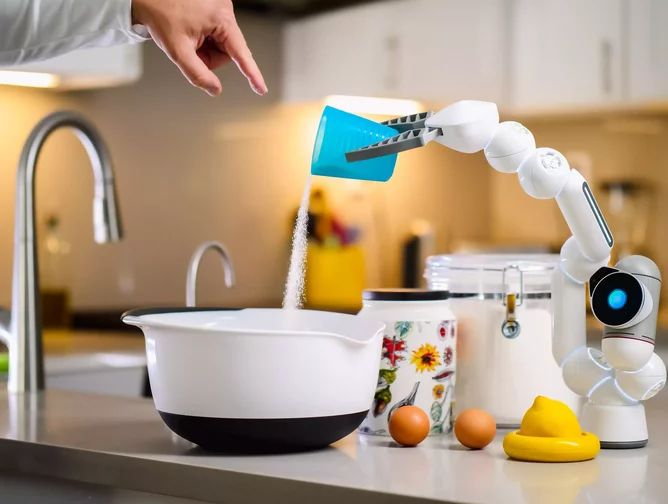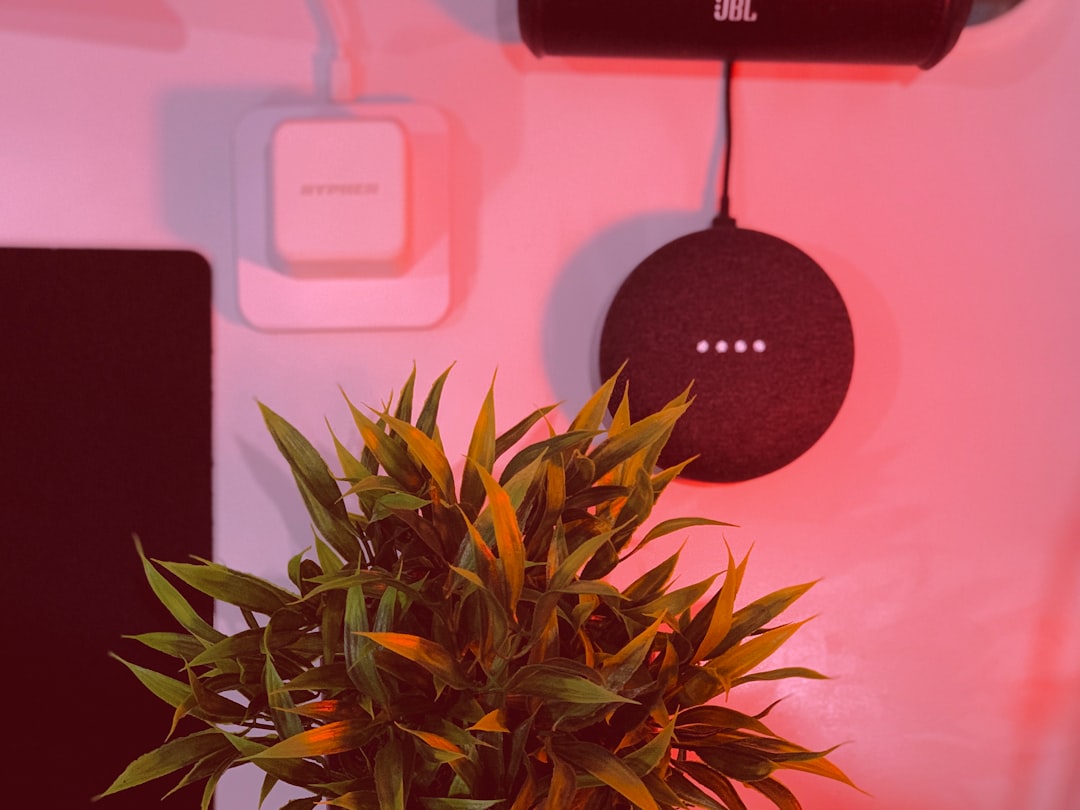The concept of the smart home has been evolving for years, moving from a niche hobby for tech enthusiasts to a mainstream reality. Early iterations focused on simple connectivity—the ability to turn your lights on from your phone or preheat your oven on the way home. While convenient, this was merely the opening act. Today, we are witnessing a profound transformation, a paradigm shift driven by artificial intelligence. The latest Smart Appliances News reveals a move away from remote control and towards proactive, predictive, and deeply personalized home automation. These new devices don’t just follow commands; they anticipate needs, learn behaviors, and communicate with each other to create a truly seamless and intelligent living environment. This article delves into the cutting-edge trends shaping the modern smart home, explores the AI technologies making it all possible, examines the importance of an interconnected ecosystem, and provides practical advice for navigating this exciting new landscape.
The New Wave of Intelligence: Key Trends in Smart Home Technology
The current generation of smart appliances is defined by three core trends that collectively elevate the home from “connected” to “cognitive.” These trends signal a deeper integration of technology into the fabric of daily life, aiming to enhance convenience, efficiency, and well-being.
Hyper-Personalization and Predictive Automation
The most significant leap forward is the move from reactive commands to predictive automation. Instead of you telling your home what to do, your home learns what you need. This is powered by sophisticated AI algorithms that analyze usage patterns, environmental data, and even your personal calendar. For instance, the latest AI Kitchen Gadgets News highlights refrigerators with internal cameras powered by computer vision. These appliances don’t just show you what’s inside via an app; they identify food items, track expiration dates, suggest recipes to use ingredients before they spoil, and automatically add items to your shopping list. Similarly, advanced AI Monitoring Devices in the home can learn your family’s routines, adjusting lighting and temperature for optimal comfort and energy savings without any manual input. This level of personalization turns the home into an active partner in managing daily life.
Sustainability and Resource Management
With growing global concerns about energy consumption, smart appliances are being engineered with sustainability at their core. AI plays a crucial role in optimizing the use of electricity and water. Smart HVAC systems, for example, integrate with real-time weather forecasts and data from AI Sensors & IoT News to cool or heat a home more efficiently. A modern smart dishwasher can automatically schedule its cycle to run during off-peak hours when electricity is cheaper and greener. This focus on efficiency is a key theme in AI for Energy / Utilities Gadgets News, demonstrating how individual homes can contribute to a more stable and sustainable power grid, a concept essential to the development of smart cities. The data gathered from these devices provides valuable insights for both consumers looking to lower their bills and utility companies managing demand.
The Convergence of Functionality
Appliance manufacturers are breaking down traditional product categories, creating multi-functional devices that save space and add value. An oven is no longer just an oven; it might also be a high-speed air fryer, a convection microwave, a steamer, and a bread proofer. The integration of AI-enabled Cameras & Vision News inside these ovens allows the appliance to recognize the food you’ve placed inside, suggest the optimal cooking program, and monitor it to perfection, sending an alert to your phone when it’s ready. This trend mirrors developments in other areas, such as Robotics Vacuum News, where a single device now combines powerful vacuuming with intelligent mopping, using advanced navigation to handle both tasks in one run. This convergence is about maximizing utility and simplifying the user experience.
Under the Hood: The AI and Robotics Driving the Revolution
The remarkable capabilities of modern smart appliances are not magic; they are the result of converging advancements in artificial intelligence, robotics, and sensor technology. Understanding these core components reveals how these devices are ableto perceive, reason, and act within our homes.

Sensor Fusion and Computer Vision
At the heart of a smart appliance’s awareness is its ability to perceive its environment. This is achieved through “sensor fusion,” where data from multiple sources—such as LiDAR, infrared, temperature, humidity, and optical sensors—is combined to create a rich, detailed understanding of the world. The best example comes from the world of autonomous cleaning. The latest robotic vacuums use a combination of LiDAR for mapping, AI Cameras News for object recognition (identifying and avoiding cables, shoes, or pet waste—a key update in AI Pet Tech News), and cliff sensors to prevent falls. This sophisticated perception, not unlike the navigation technology seen in Drones & AI News, allows them to clean more efficiently and reliably than ever before. This same principle applies to a smart laundry machine that uses sensors to detect fabric type and soil level, automatically adjusting the wash cycle for optimal results.
Generative AI and Natural Language Interfaces
The way we interact with our devices is also undergoing a revolution. Simple, rigid voice commands are being replaced by conversational, natural language interactions powered by Large Language Models (LLMs). This evolution in AI Assistants News means you can have a more nuanced dialogue with your home. Instead of saying, “Set oven to 400 degrees,” you could ask, “What’s the best way to roast this chicken?” Your smart oven could then access a vast database of culinary knowledge, ask clarifying questions (“Do you prefer crispy skin?”), and set a multi-stage cooking program automatically. This integration of conversational AI, often managed through AI Audio / Speakers News hubs or directly via AI Phone & Mobile Devices News, makes technology more accessible and intuitive, removing the need to memorize specific commands.
The Shift to Edge Computing
A critical technical development is the move towards AI Edge Devices News. Historically, smart devices relied on the cloud to perform complex AI calculations. This created latency and raised privacy concerns, as personal data had to be sent to remote servers. With edge computing, the AI processing happens directly on the device itself. This is vital for applications requiring real-time responses and enhanced security. For example, the latest AI Security Gadgets News features cameras that analyze video feeds locally to detect a person versus a passing car, reducing false alarms and ensuring your private video footage doesn’t leave your home unless necessary. This local processing is faster, more reliable, and fundamentally more secure, a trend that will only accelerate as on-device chips become more powerful.
Building the Symphony: The Interconnected Smart Home Ecosystem
A single smart appliance is useful, but the true power of the smart home is realized when devices work together in a cohesive ecosystem. This interoperability has been a major challenge, but new standards and a broadening focus on holistic well-being are finally breaking down the walls between different brands and platforms.
Matter: The Universal Translator for the Smart Home
For years, the smart home was fragmented, with devices from Apple, Google, and Amazon operating in separate, incompatible “walled gardens.” The arrival of Matter, a universal connectivity standard, is changing the game. Matter acts as a common language, allowing devices from different manufacturers to communicate with each other seamlessly and securely. This means a consumer can buy a thermostat from one brand, smart lighting from another, and a door lock from a third, and be confident they will all work together. This simplifies setup and control, allowing for the creation of complex automations. For example, a Matter-enabled smart lock can trigger your AI Lighting Gadgets News to turn on, your smart speakers to play a welcome home playlist, and your thermostat to adjust to your preferred temperature the moment you unlock the front door.
Integrating Health, Wellness, and Fitness

The smart home is expanding beyond convenience to become a partner in personal health and wellness. The latest Health & BioAI Gadgets News shows a clear trend of integrating data from personal health trackers with home automation. Imagine this real-world scenario: your fitness tracker, a key topic in Wearables News, syncs with your home ecosystem. After detecting you’ve completed a strenuous workout, it could trigger your smart water bottle to glow as a hydration reminder. Meanwhile, your smart refrigerator, aware of your dietary goals, could suggest a protein-rich post-workout meal and display the recipe on its screen. Furthermore, data from AI Sleep / Wellness Gadgets News, like a smart mattress or bedside tracker, can be used to create an optimal sleep environment by automatically dimming lights, lowering the thermostat, and activating white noise machines.
The Home as a Centralized Hub for Life
As our homes increasingly serve as offices, gyms, and entertainment centers, smart appliances are evolving to become centralized hubs for managing modern life. The large, high-definition screens on new refrigerators are a prime example. They are no longer just for displaying photos; they are interactive dashboards for family calendars, video calls, streaming services, and controlling other smart devices. This blends the functionality of AI Office Devices News with home management. In the near future, we can expect deeper integration with emerging technologies like those seen in AR/VR AI Gadgets News. Imagine using Smart Glasses News to look at your pantry and see an augmented reality overlay of recipes you can make with the ingredients you have on hand, a concept that moves from science fiction to near-term reality.
Adopting the Future: Practical Tips and Common Pitfalls
As the smart appliance market explodes with innovation, it can be daunting for consumers to know where to start. Making informed decisions and prioritizing security are crucial for building a smart home that is both helpful and safe.
Best Practices for Security and Privacy

Every connected device is a potential entry point for security threats. It is essential to practice good digital hygiene. First, always change the default username and password on any new device. Second, enable two-factor authentication (2FA) wherever possible. Third, be mindful of the data you are sharing and review the privacy policies of the devices and apps you use. Finally, keep your device firmware and software updated, as these updates often contain critical security patches. These steps are especially important for sensitive devices like security cameras and smart locks.
Choosing the Right Devices for Your Home
To avoid being overwhelmed, start small. Identify a specific problem you want to solve—whether it’s saving energy, simplifying your cooking routine, or automating your cleaning. Begin with a single, high-quality device that addresses that need. When expanding, prioritize devices that support universal standards like Matter to ensure future compatibility. Look for brands with a strong track record of long-term software support. Much of the “intelligence” in these devices comes from software, and a product without ongoing updates can quickly become obsolete or insecure.
The Pitfall of “Smart for Smart’s Sake”
Not all “smart” features are genuinely useful. The market is filled with gimmicky products that add connectivity without solving a real-world problem. A truly smart appliance should make a task easier, more efficient, or more enjoyable. Before purchasing, ask yourself if the smart functionality offers a tangible benefit over its non-smart counterpart. Be wary of features that seem novel but have little practical application. Often, the most impactful innovations are the ones that work seamlessly in the background, rather than those that demand constant attention.
Conclusion: The Dawn of the Ambient Home
The latest wave of smart appliances marks a pivotal moment in the evolution of the home. We are moving beyond the era of simple commands and entering the age of ambient computing, where technology is woven into our environment, responding and adapting to our needs with minimal intervention. The convergence of powerful AI, sophisticated sensors, and universal connectivity standards is creating a home that is not just automated, but truly intelligent. From the kitchen that helps plan our meals to the lighting that syncs with our circadian rhythms, these innovations promise a future of greater convenience, efficiency, and well-being. While challenges around security and privacy remain, the trajectory is clear: the smart home is rapidly becoming an indispensable partner in navigating the complexities of modern life, learning from us to serve us better every day.










